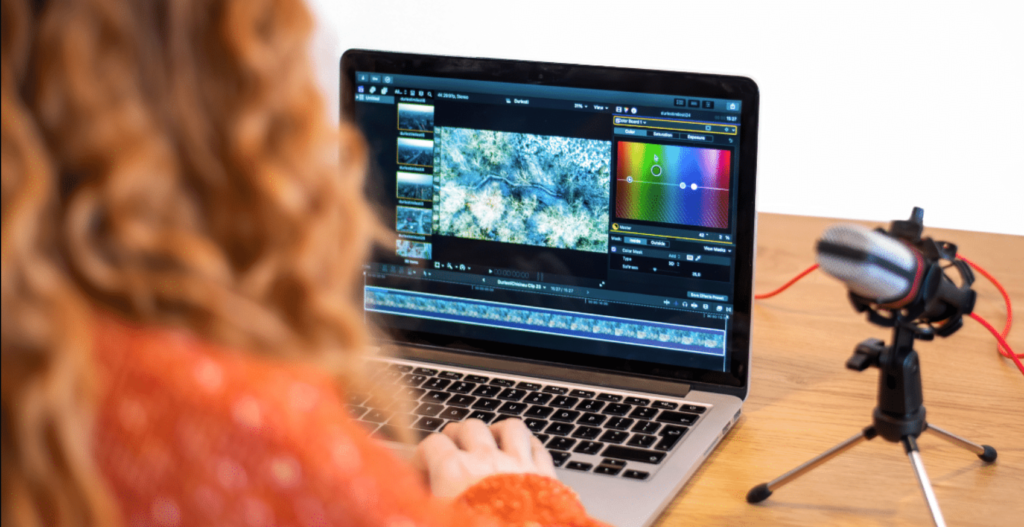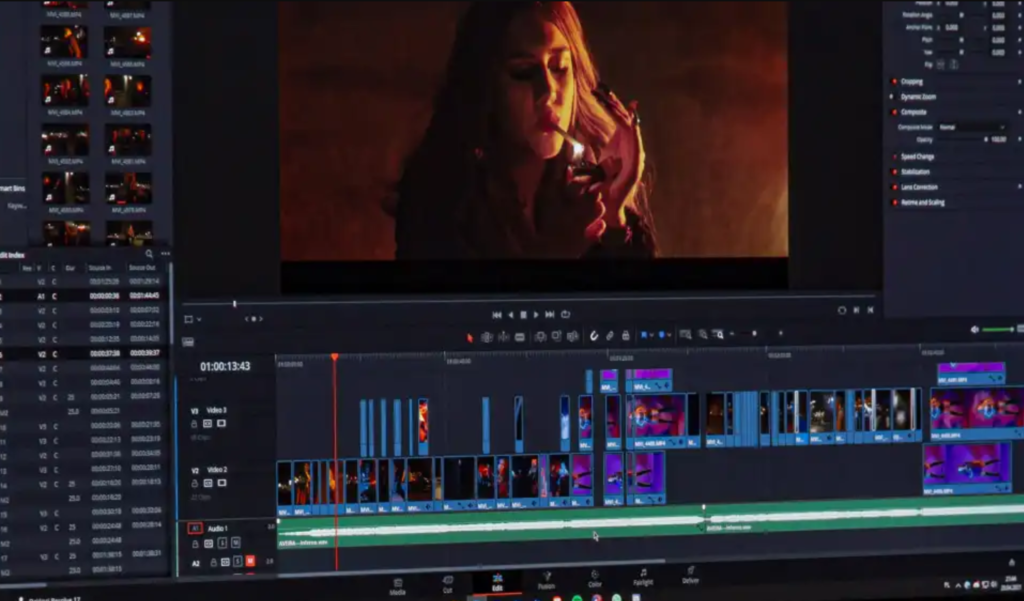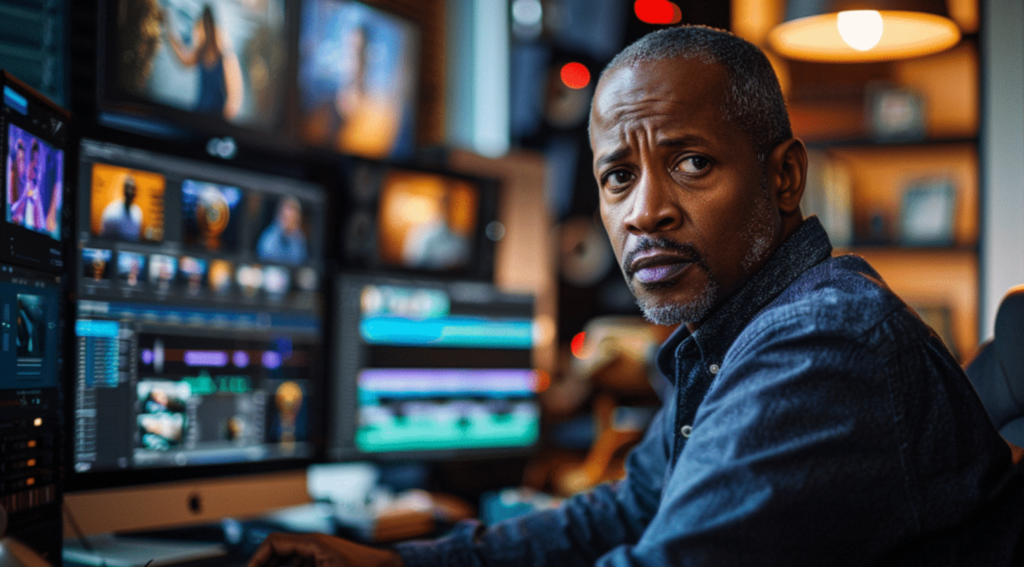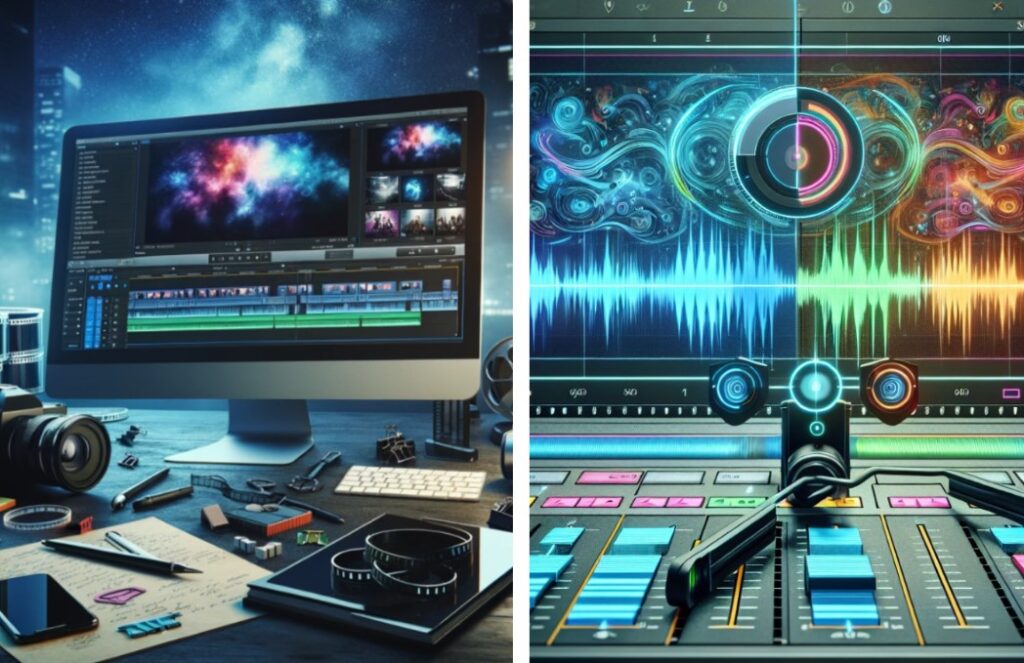Video editing is the process of manipulating and rearranging video footage to create a polished, cohesive, and engaging story. It is a crucial part of visual storytelling, where raw clips transform into impactful content for audiences. Whether you’re creating a blockbuster movie, a YouTube video, or a marketing campaign, video editing brings your vision to life.
The Basics of Video Editing
Video editing involves much more than simply cutting clips together. It’s a creative and technical process that includes trimming footage, adjusting timing, adding effects, and synchronizing audio to visuals. Modern video editing is typically done using advanced software, allowing editors to manipulate every detail of a video project with precision.
There are a variety of techniques and tools available for video editors today. From simple cuts and transitions to complex color grading and CGI effects, the possibilities are endless. At its core, video editing is all about turning raw footage into something meaningful and visually appealing.
Why is Video Editing Important?

Video editing is essential because it is the key to transforming raw footage into engaging, impactful content. Without editing, videos would feel unpolished, unstructured, and lacking in emotion. Whether it’s a film, commercial, or tutorial, video editing enhances the final product by adding structure, pacing, and style.
In industries like film, video editing shapes the narrative by piecing together various scenes and giving the story its flow. In marketing and social media, it’s crucial for grabbing viewers’ attention in a crowded digital space. An expertly edited video can convey messages more effectively, leave a lasting impression, and boost audience engagement.
Core Components of Video Editing
Mastering the art of video editing means understanding its core components. Here are some key elements every editor must know:
- Cutting and Trimming Footage
This is the foundation of video editing. It involves selecting the best parts of the footage, removing unnecessary segments, and ensuring the video flows seamlessly. - Adding Transitions, Effects, and Titles
Transitions like fades and dissolves can enhance the flow between scenes, while effects and titles add visual interest and convey additional information. - Enhancing Audio and Visuals
Audio plays a critical role in video editing. Syncing music, cleaning up background noise, and balancing sound levels can make a big difference. Additionally, color correction and grading bring consistency and style to the visuals.
Popular Video Editing Software

Choosing the right software is crucial for video editing. Here are some top options:
- Adobe Premiere Pro: A professional tool widely used in the industry, offering robust features for advanced editing.
- Final Cut Pro: Ideal for Mac users, known for its user-friendly interface and powerful editing capabilities.
- DaVinci Resolve: Perfect for those looking for top-tier color grading and post-production features.
For beginners, free software like iMovie and CapCut are great starting points. They offer basic editing features and an easy-to-use interface for learning the ropes of video editing.
Types of Video Editing Styles
Understanding different editing styles can help you craft more creative and engaging videos. Some common styles include:
- Linear vs. Non-Linear Editing
Linear editing involves editing footage in chronological order, while non-linear editing allows for flexibility by rearranging clips at any point in the timeline. - Artistic Approaches
Techniques like montage editing, color grading, and slow-motion effects add a creative flair to your work. These styles can dramatically change the tone and mood of a video.
The Role of Storytelling in Video Editing

At its heart, video editing is a form of storytelling. Editors have the power to structure narratives, control pacing, and evoke emotions through their choices.
For example, the way an editor transitions between scenes can affect how the audience perceives the passage of time. Similarly, cutting to close-up shots at emotional moments can amplify the impact of the story. A good editor knows how to align visuals and audio to create a cohesive and compelling narrative.
Technical Skills Every Video Editor Needs
To excel at video editing, mastering certain technical skills is essential:
- Timelines and Keyframes: These are the backbone of modern editing software, allowing you to organize and animate footage with precision.
- Color Grading: Adjusting colors, contrast, and saturation to achieve the desired visual tone.
- Understanding Video Formats: Knowing the differences between resolutions (e.g., 1080p, 4K) and frame rates ensures your work is optimized for its intended platform.
Creative Tips for Successful Video Editing
Creativity and technical expertise go hand in hand in video editing. Here are some tips to help you succeed:
- Plan Your Edit: Start with a clear vision of the final product. Storyboarding or creating an outline can save time and guide your editing decisions.
- Experiment with Styles: Don’t be afraid to try different editing techniques or use bold transitions to see what works best.
- Focus on the Story: Always prioritize the narrative and avoid adding unnecessary effects that may distract the viewer.
Challenges in Video Editing and How to Overcome Them
Like any creative process, video editing comes with its challenges. Limited footage, tight deadlines, and software glitches are just a few common issues editors face. To overcome these challenges:
- Stay organized by labeling clips and creating a workflow.
- Use keyboard shortcuts to speed up repetitive tasks.
- Back up your project files regularly to prevent data loss.
The Future of Video Editing
The world of video editing is rapidly evolving, with emerging trends that promise to revolutionize the field:
- AI-Powered Editing: Artificial intelligence is making tasks like scene detection and color correction faster and more accurate.
- Virtual Reality (VR): VR editing tools are becoming more prevalent, allowing creators to design immersive video experiences.
- Automation: Advanced software is enabling automated editing processes, reducing the time required to complete projects.
Staying updated with these trends will help you remain competitive in the ever-changing industry.
How to Start Your Journey in Video Editing
Getting started with video editing is easier than ever. Here are some tips for beginners:
- Learn the Basics: Explore tutorials and free courses online. Platforms like YouTube offer countless resources for learning editing techniques.
- Use Beginner-Friendly Software: Start with programs like iMovie or CapCut to familiarize yourself with the editing process.
- Build a Portfolio: Practice editing different types of projects and showcase your best work to potential clients or employers.
Remember, consistency is key. The more you practice, the more skilled and confident you’ll become.
Conclusion
Video editing is a unique blend of art and science, where technical expertise meets creative storytelling. Whether you’re crafting a short social media clip or a feature-length film, video editing is your tool to captivate, inspire, and connect with audiences. By mastering the basics, honing your technical skills, and staying up to date with industry trends, you can unlock your potential as a video editor and make your mark in this exciting field.
FAQs
What is video editing?
Video editing is the process of arranging, enhancing, and polishing raw footage to create a cohesive and engaging video.
What software is best for beginners in video editing?
Beginner-friendly software like iMovie, CapCut, and Shotcut are great starting points.
What skills are essential for video editing?
Essential skills include creativity, knowledge of editing software, color grading, and an understanding of timelines and audio synchronization.
Why is video editing important in storytelling?
Video editing shapes the narrative, controls pacing, and enhances emotional impact, making stories more engaging and impactful.
How can I start learning video editing?
Start with free online tutorials, beginner software, and practice editing small projects to build your skills over time.
Visit For More Information Go To:- Tribune Media
